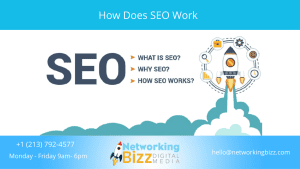Do you have the same content strategies for local SEO and broader organic SEO? Improve your local SEO with these content marketing tips.
When you think about improving your local SEO, do you think about content?
Maybe not.
I’ll admit, it’s not always the first thing that comes to my mind.
But here’s the thing – content directly affects local SEO, and overlooking it is a huge mistake.
Yes, we might have limited text fields and places where we can input content.
Hear me out, though. There’s more to it than you might think.
Key Differences In Local & Organic SEO Content Strategies
You may know about the content Google likes to see on a website and how to optimize it to show up higher on search engine result pages.
But what about local content?
How is that different?
Here’s the thing, content strategies for local SEO and broader organic SEO aren’t actually that different.
No matter what, good informative content should always be a priority.
The main difference between local SEO and organic SEO content lies in user intent.
For local SEO, the user intent is to find goods or services near them, so they include a location indicator in their search query.
For example, you may search for [Kansas City hair salon], [hair salon in Kansas City], or [hair salon near me].
The location indicator tells Google to prioritize, showing the user results in their area.
This has been the case for a long time as Google has wanted to serve up more localized SERP features (like map results) for searches that it has perceived local intent.
So when you’re writing for local SEO, produce content that highlights your location.
Getting Started
Before you begin writing content for your site, you should always take a minute and think about your end game.
Ask yourself what goals you want to achieve.
And how can your content and messaging aid in completing your goals?
For example, say you want to improve your local SEO so more people visit your brick-and-mortar storefront to ultimately increase sales and revenue.
This is a great goal.
Good local SEO can help you achieve it, but creating a Google My Business listing is not enough.
Prioritize creating high-quality content that highlights both what you have to offer and your location.
Local Content Audit
If you haven’t already done so, now is a good time to perform a local content audit.
When running a content audit, ask yourself what your ideal local customer is searching for.
Are they researching what’s available in their target area?
Reading reviews?
Looking to visit a location now?
Searching for a provider to come to them or to have a product delivered?
Knowing this information helps you determine if there are gaps in your content you could fill to help rank better in local searches.
Another important piece of a local content audit is competitor research.
Check out your competitors’ websites to gather information regarding the keywords they’re targeting and the content structure to get their local clients or customers to convert.
Once you know who you’re targeting and what they’re searching for, you’re in a great position to begin writing.
Now, let’s dive into specific content strategies you can use to improve your local SEO.
On-Page Local SEO Content
Here’s a bit of good news, if you have a well-optimized website that includes quality content, there’s not much you’ll need to change to optimize it for local searches.
Just a few tweaks here and there.
One of the most important things you can do to improve local SEO is putting your address in the footer.
If you have fewer than ten locations, I recommend putting them all in your footer.
Additionally, it’s important to create dedicated landing pages for each location you serve.
Each of these pages should have original content specific to the area/location.
Do not simply copy and paste the information from one page to another, even if you do the same thing at all your locations.
This would be duplicate content, which could hurt your SEO.
General reminders for creating a good page:
- Write informative and engaging content that describes the products or services you offer.
- Organically optimize your page for the correct geo-specific keywords (don’t keyword stuff).
- Add photos or infographics and optimize the alt text.
- Make sure your page is optimized for voice and mobile searches.
- Use local-specific schema markup.
- Refresh the content occasionally to keep it fresh and relevant.
Blogging
Blogging is a powerful tool to provide your customers with useful information and set you up as an expert in your field.
Simply put, in the eyes of Google, it has the power to increase your expertise, authority, and trust (EAT).
But outside of this, blogging is a great way to highlight your location(s) and boost your local SEO.
First and most importantly, it provides Google with fresh content that reiterates where you’re located.
It also helps you target those pesky local keywords like “wine bar near me” that may be hard to rank for.
Additionally, blogging allows you to get backlinks from other local businesses.
And, it offers a chance for people to comment on or share your article, which are two things that improve local SEO.
But I’d be remiss if I didn’t remind you that one of the most important things you can do with a blog is share it – on social media and on any local lists that allow it.
Get comments, get likes, and drive local traffic to your articles.
Off-Page Local SEO Content
Google Business
Your Google Business Profile is the first and most obvious off-page location for local SEO content.
Adding content to your Google Business Profile is important when working on improving your local SEO.
You can do this in various ways, but the top priority should be optimizing your profile by including as much relevant information as possible.
You can add a description of your business, your hours, product information, and your services. For example, a food menu and photos for a restaurant.
When optimizing your Google Business Profile, make sure all the information you provide is correct.
If anything changes, such as your hours of operation, update your profile accordingly.
Another valuable thing you can do is post photos, current blog articles, relevant specials, and updated policies and procedures on your feed.
This communicates to Google that you’re an active listing to promote because you provide users with valuable information.
Ultimately, well-optimized Google Business Profiles receive more clicks and requests for directions.
A key part of building a good local SEO strategy is gathering reviews and responding promptly.
In terms of content, reviews on user-generated content carry a lot of weight.
A Note On The Map Pack …
Getting your business featured on the Map Pack is a big deal.
It allows users to see your listing first before scrolling through SERPs.
A few content-related strategies that can help you get one of the coveted spots in the Map Pack:
- Claim and optimize your Google Business Profile.
- Write hyper-local content.
- Have dedicated landing pages for your various locations.
- Use schema markup.
- Gather and respond to reviews.
- Optimize your site for voice and mobile searches.
Other Listing Services
When it comes to SEO, Google is the major player for sure.
So, it’s no surprise that the major thing tied to local SEO is Google Business.
But, we shouldn’t overlook other local listing services like Bing Local, Yelp, Thumbtack, Yellowpages.com, Foursquare, and more – depending on our industry and focus.
Posting content and other updates gives your website a citation and boosts local credibility.
If you’re on these sites, don’t forget to give them some attention now and then and make sure you respond to any reviews you’ve earned – even if using data aggregation services to push data to third-party directories.
Your online reputation is important to Google and shouldn’t be forgotten.
Social Media
As I’m sure you already know, social media helps SEO.
So having a Facebook and Instagram business listing is important.
It increases your audience, so your article gets more views.
And, more views means more opportunities for backlinks.
Ultimately, having a robust social media presence and posting useful content on your social feed impacts your EAT and makes you look more credible in the eyes of Google.
Final Thoughts
Good content is an essential part of a good SEO strategy.
In terms of local SEO, good content with location indicators prompts Google to rank you higher in local search results and the Map Pack.
Simply creating quality content for your site is not always enough. You should also share it to your Google Business Profile, other local listing sites, and your social media feeds to increase traffic and showcase your expertise and trustworthiness.




